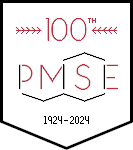Professor J. Edward Glass of the Polymers and Coatings Department at North Dakota State University will receive the Roy W. Tess Award in Coatings for 2005.
Professor Glass is recognized as one of the world’s leading experts in the areas of water-soluble polymers and water-borne coatings. He has published over 175 papers, received 6 patents and edited 7 books, based on symposia organized at American Chemical Society meetings. He has also presented numerous keynote lectures and plenary talks at national and international conferences, including Gordon Conferences in the US and in Europe, Fatipec Conferences, International Coating Expositions and the Athens International Coatings Conference.
Dr. Glass earned a B.S. in Chemistry from Louisiana State University in 1959 and a Ph.D. in Physical Organic Chemistry from Purdue University in 1964. He joined the Technical Center of Union Carbide in S. Charleston, WV in September of 1963. His first challenge came with an assignment working with Union Carbide’s Texas City poly(vinyl chloride) [PVC] production facilities. Through fundamental studies of water-soluble polymers, the characteristics important to application properties could be determined, an approach used throughout Dr. Glass’ career. In suspension PVC production it was surface dilational viscosities and adsorption that facilitated controlled particle porosity and morphology that facilitated market acceptance and profitability by raising the plant’s production output from 50% to full capacity.
This approach was followed in defining the role of components, primarily latex and thickener, and their interactions, on the shear related viscoelastic response of water-borne coatings and the latter’s relation to flow out behavior in brush applications. A primary concern during this period was the need to remove mercury from latex paints, used to prevent the enzymatic degradation of the thickener. His industrial research group successfully developed a commercial process to control the substitution pattern of ethylene oxide on cellulose to produce an enzymatically stable hydroxyethyl cellulose, that has over the past two decades proven to be a real product of commerce in mercury free latex paints. Continuing the coatings rheology studies, Glass defined, in a series of seminal studies, the role of dynamic uniaxial extensional viscosities in the spatter behavior of roll applied coatings. This was followed by a brief research program in surfactant-modified, water-soluble polymers (i.e., associative thickeners) that ended when early industrial competitors withdrew their products from the market. To coin a common industrial phase, this provided an opportunity to explore parameters that improved the mechanical, thermal-oxidative and gelation characteristics of water-soluble polymers used in a variety of petroleum recovery processes.
In 1980, Dr. Glass joined North Dakota State University as Professor in the Polymers and Coatings Department. At NDSU, in addition to a heavy teaching load, he led a research group that included studies on a broad spectrum of topics, but the group became best known for their focus on the synthesis, characterization and application studies of surfactant-modified, water-soluble polymers, particularly in the design of unique model associative thickeners based on Hydrophobically modified, Ethoxylated Urethane (HEUR) structures. Glass’ group defined HEUR interactions with the numerous components (latex compositions and median particle size, coalescing aids, hiding pigments, colorants, and surfactant structures) in water-borne latex and water-reducible coatings. In addition to developing new polymers, his group has made significant contributions to understanding the relationships of extensional flows in petroleum recovery processes, combustion fuels, adhesives, and paper coatings. By using water-soluble polymer blends his group was able to better qualify the role of extensional viscosities, defined in his earlier studies, on spatter in roll applications of coatings. In recent years, this understanding was used to define the roll of extensional viscosities in the spray application of water-borne coatings and high-solids coatings under different application parameters. In addition to carrying out an active research program, Dr. Glass has organized numerous workshops and consulted with major coatings suppliers in the US and internationally.
Dr. Glass will receive the Tess Award from Dr. Benny Freeman, Chair of the PMSE Division, on Monday, August 29, 2005 during the 230th Meeting of the American Chemical Society in Washington, DC. Dr. Glass will present an Award Address at that time. An evening reception sponsored by the PMSE Division will follow the Award Symposium.
The Tess Award is presented annually by the Division of Polymeric Materials: Science and Engineering in recognition of outstanding contributions to coatings science and technology. It is funded by a grant to the Division from Dr. and Mrs. Roy W. Tess. The purpose of the award is to encourage interest and progress in coatings and recognize significant contributions to the field. The Award consists of a plaque and a cash prize.




